At the heart of environmental justice is recognizing the right of people to have a real voice in what happens to the place they live. That’s why we’re partnering with other regional and national environmental groups to engage in conversation with residents of communities in the Long Island Sound region that have been impacted—historically and today—by excessive pollution, lack of access to green space and waters, and other forms of environmental racism.
On November 11, Save the Sound co-hosted a Hutchinson River-focused community conversation with Environmental Leaders of Color (ELOC), Adopt Clean Energy, Restore America’s Estuaries (RAE), and Long Island Sound Study (LISS) members at Mount Calvary CME Church in Mount Vernon, NY. This event follows a similar forum in the Fair Haven neighborhood of New Haven, CT (read more).
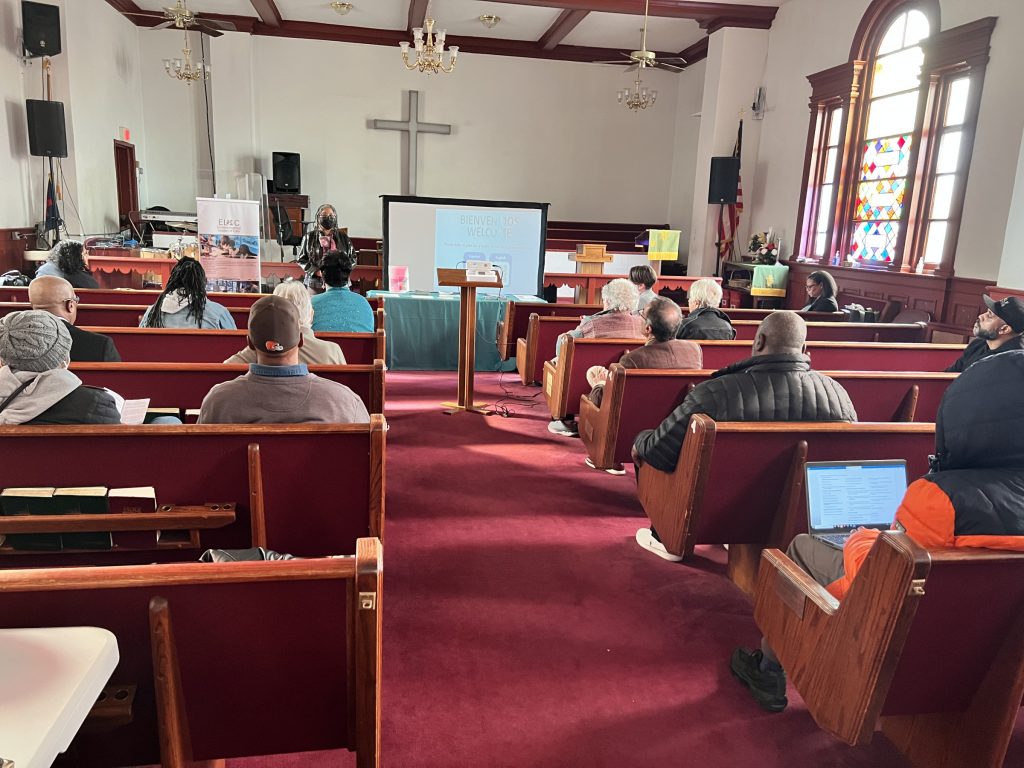
The conversation began with attendees completing an Environmental Justice (EJ) Needs Assessment survey. This survey, created by LISS and research firm Responsive Management, aims to ascertain what environmental justice needs residents encounter in their communities. This includes obstacles like proximity to polluting facilities, barriers to waterfronts, and inaccessibility to funds for sustainability projects or programs. Collection of the data will help LISS better identify inequities in the region and determine where to prioritize resources to support community-based sustainability initiatives.
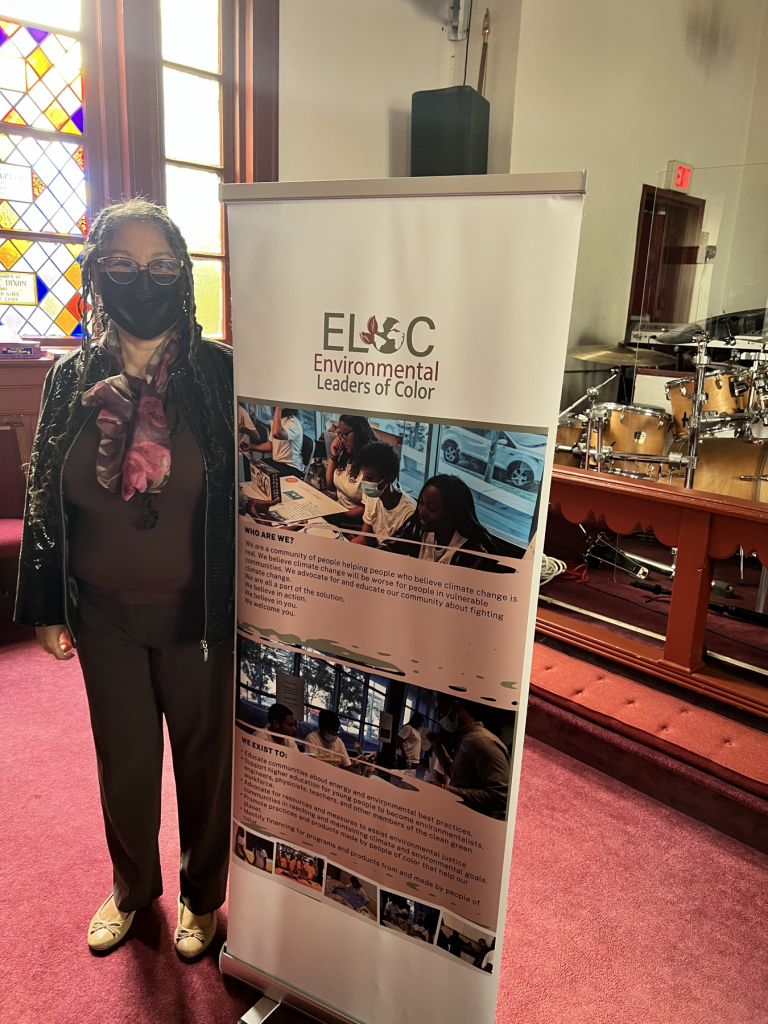
Once the attendees completed the survey, Dr. Diana Williams, executive director of ELOC, kicked off the event. She spoke to how ELOC is assisting marginalized communities in preparing for climate change’s adverse impacts through education and advocacy and noted the need for more expertise and collaborations towards fixing Mount Vernon’s sewage infrastructure. She then welcomed introductions from Save the Sound, New York Sea Grant, and Restore America’s Estuaries.
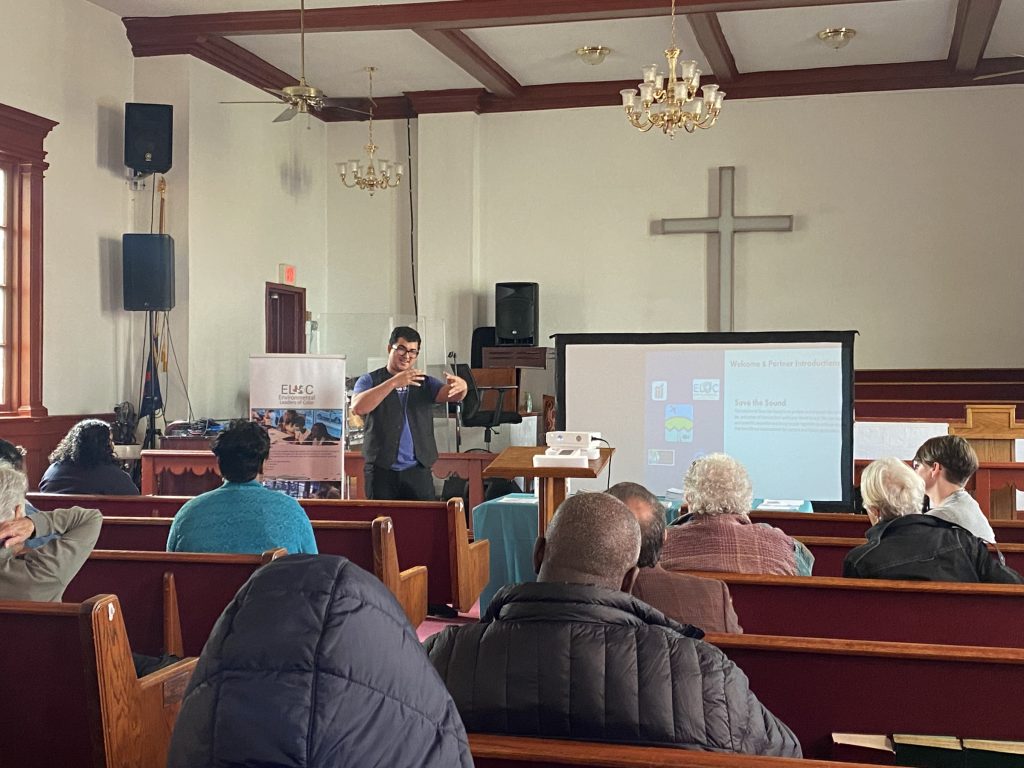
Our environmental justice specialist Alex Rodriguez presented on the Hutchinson River and how its watershed connects to the Sound, as well as our shared goals: (1) protecting the health of the Sound and the people who live near it, (2) providing educational, recreational, and conservation opportunities for the public, and (3) elevating the needs of priorities of underserved communities.
“The earth is similar to our bodies, and the water within it; from the river to the Sound, is our blood. We have to take care of it and keep it clean,” said one Mount Vernon resident.
There was a significant dialogue about the need to clean the Hutchinson River and there was also prizes for participants who answered trivia questions correctly. Those questions included identifying what a watershed is, identifying what substances cannot be poured safely down a drain, and naming what municipalities are included within the Hutchinson River watershed.
“I didn’t know that pouring juice down the sink drain could impact my pipes because of its high acidic value. I learned you should dilute it with water if you needed to pour it down the drain,” said another resident.
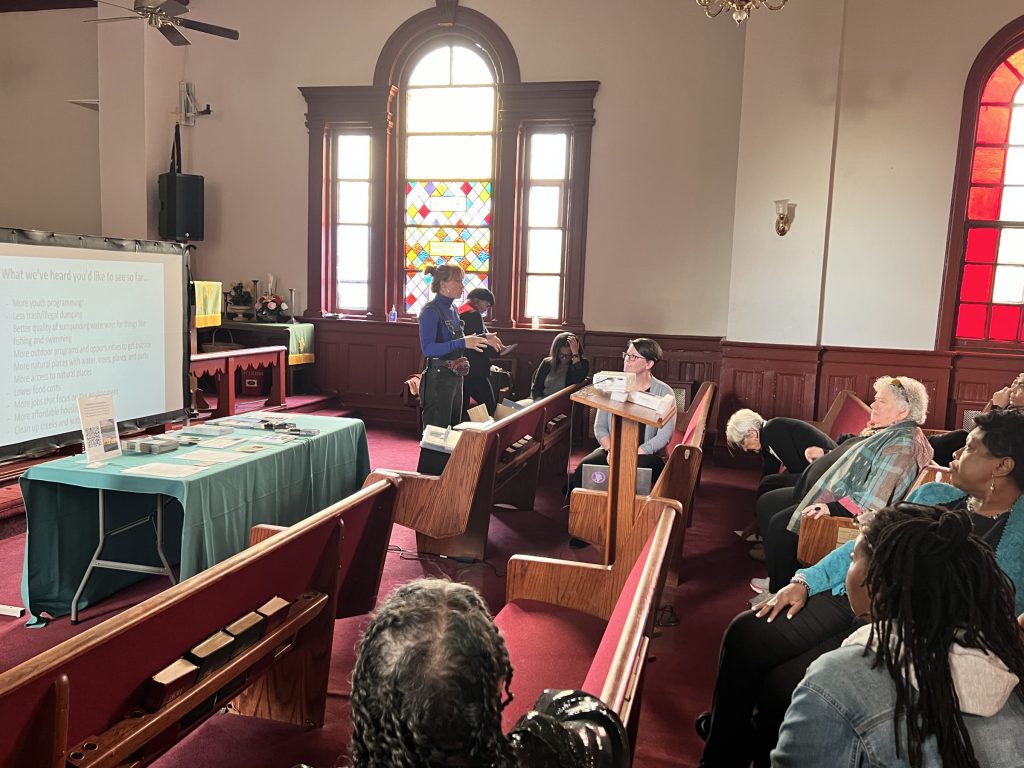
ELOC and Responsive Management then facilitated a group discussion regarding the visioning of the Hutchinson River. Mount Vernon and Bronx residents relayed their visions, including:
- More youth programming
- Less trash and illegal dumping
- Better quality of surrounding waterways for things like fishing and swimming
- More outdoor programs and opportunities to get outside
- More natural places with water, trees, plants, and parks
- More access to natural places
- Lower food costs
- More jobs that focus on the environment
- More affordable housing
- Clean up creeks and waterways
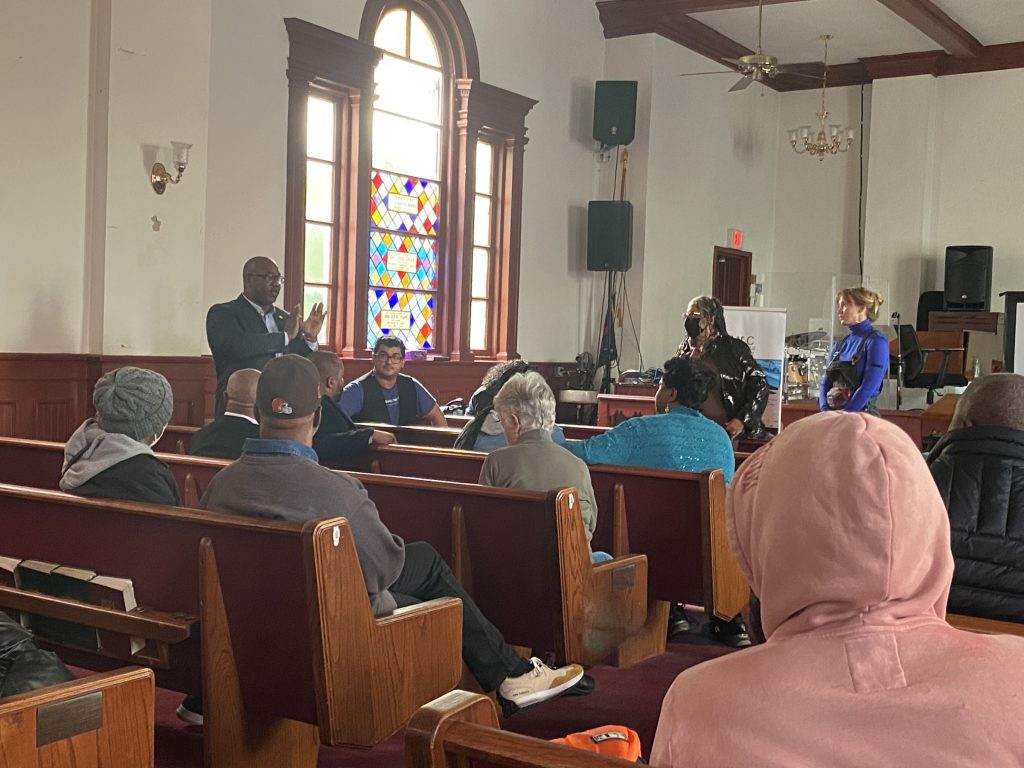
The conversation attracted municipal officials from the sustainability department, city councilpersons, the local Parent Teacher Association (PTA), and U.S. Representative Jamaal Bowman (NY-16). Rep. Bowman noted that thanks to the Bipartisan Infrastructure Law and the Inflation Reduction Act, there are more federal dollars than ever before for environmental justice-focused projects and encouraged participants to take advantage of the opportunities.
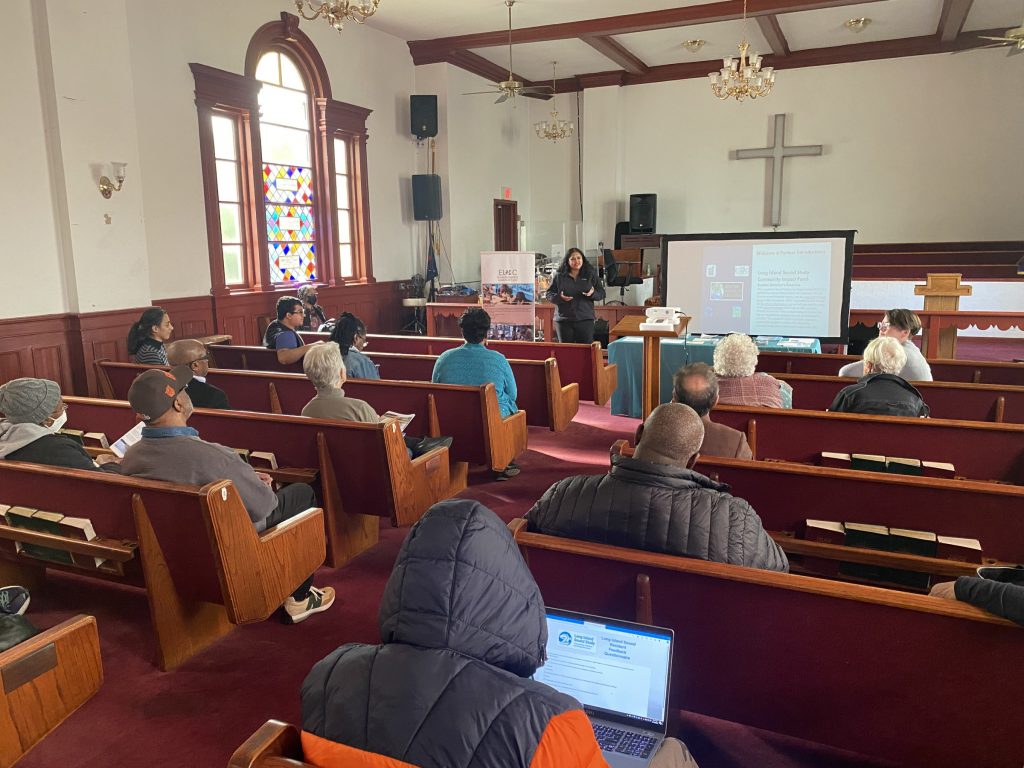
Save the Sound and Restore America’s Estuaries informed attendees about the Long Island Sound Community Impact Fund (LISCIF), formed through a partnership with RAE, the Environmental Protection Agency (EPA), and LISS and funded by EPA through the Bipartisan Infrastructure Law. It is awarded to projects that will increase access to Long Islan.d Sound while reducing environmental public health risks. LISCIF will also provide technical assistance in underserved communities.
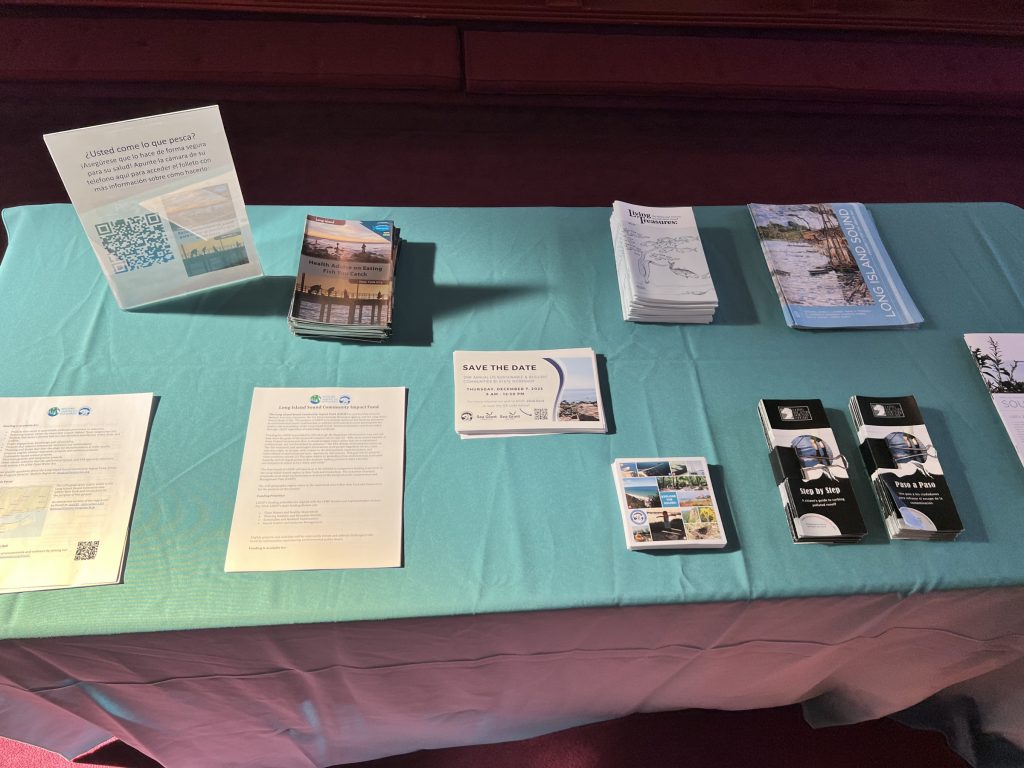
The event concluded on a positive note with residents eager to engage in additional activities related to the Hutchinson River. Fortunately, there are many opportunities coming up! Save the Sound is wrapping up development of a watershed management plan for the Westchester County portion of the Hutchinson River, and starting one for the Bronx portion. If you are a Mount Vernon or Bronx resident, please click here for our Hutchinson River Public Input Map and add your thoughts. The information gathered from watershed residents and users of the lands and waterways will help us:
- Identify nonpoint source pollution contributing to water quality impairment and risks associated with flooding, and propose management, restoration, and design recommendations to improve water quality and reduce flooding in the watershed;
- Identify implementable restoration and stormwater mitigation projects with a focus on those that provide flood mitigation and emphasize nature-based solutions; and
- Engage and educate municipal agencies, key stakeholders in the watershed, and the public through the formation of a Watershed Steering Committee, volunteer opportunities, public meetings, and webinars.
The information and visions you share can help us make environmental justice for the Hutchinson River watershed a reality—together.
